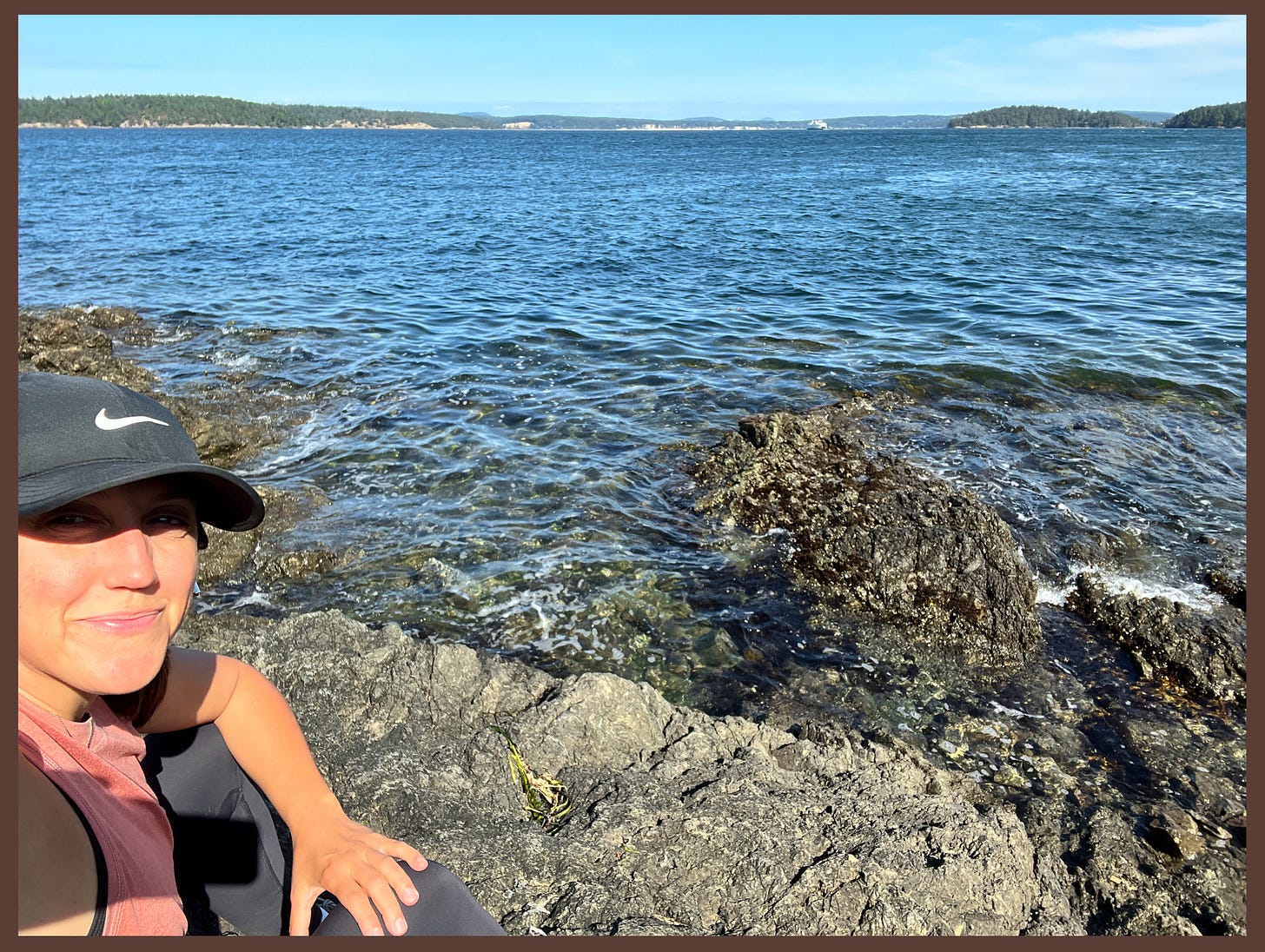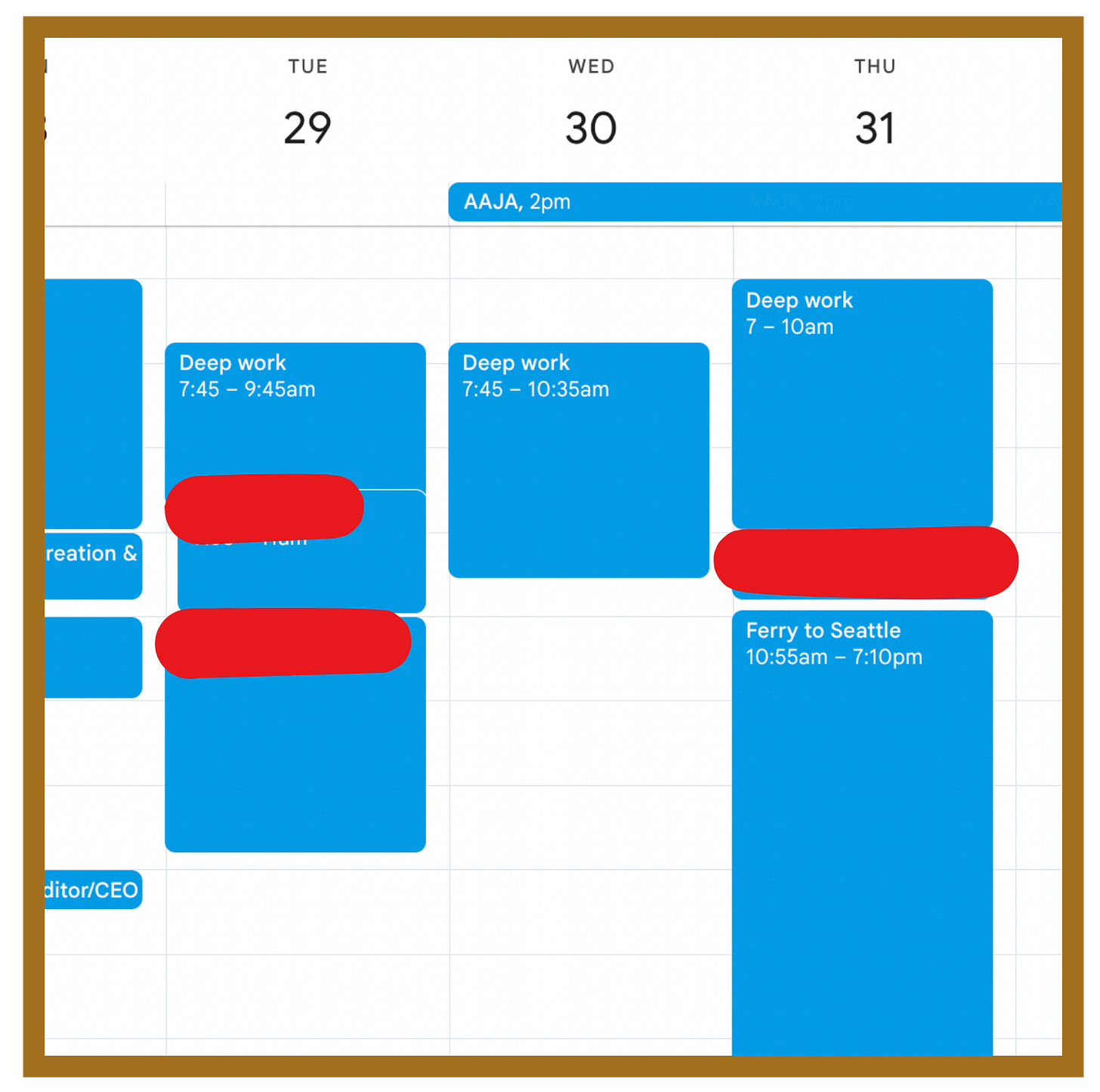This post is part of Creative Lab: Summer 2025, a series all about trying new things! A key part of solopreneurship is just trying shit, so I’m trying new some formats and topics this summer.
It’s also a special issue, co-published with Project C, who I work with a lot. I wrote this to help them celebrate publishing the list of the Top 50 Creator-Model Journalists, but it’s relevant to all solopreneurs. It’s also long, so if it gets cut off in email, here is a web version.

I started working for myself one year ago this month, and while it’s the first time I’ve done so intentionally, it’s not the first time I’ve had to make my own money.
After graduating into the Great Recession, I got laid off almost immediately and spent the next year blogging and doing this new thing called “tweeting” for brands. My gig as a nanny on the Upper West Side paid the bills.
After a layoff in 2016, I took an adjunct teaching gig and picked up a social strategy retainer. I remember marveling at the thought that I could keep going with just one more anchor client, even though I ended up taking a full-time job.
This time, I chose solopreneurship on purpose. I’m also older. I have a professional reputation. A mortgage. Specific retirement goals, starting at the age of 55. Which is all to say that this time, it also felt like there was so much more to lose.
Solopreneurship brings with it a certain kind of uncertainty and risk that is very real, and often invisible. And these days, it’s often not a choice. I know multiple talented, seasoned people who’ve been laid off recently.
The good news: Resilience is a skill that can be built. Today, I barely blink at things that would have kept me up at night last fall.
My own experience has taught me a lot, but I’ve learned even more through Project C and Going Solo, supporting dozens of solopreneurs building independent media businesses.
Below are 18 tools and tactics that have helped me build resilience and speak directly to the speedbumps that solopreneurs hit most often. They’re divided into what I’ve come to see as the core pillars of resilience: self-awareness, support systems, mental strength, and capacity management.
This list is by no means comprehensive — just what’s been most impactful for me, and what I hope is helpful for you.
Three big things
These have had the biggest impact on my own ability to bounce back from a setback.
Learn how to retrain your brain. I’ll never make enough money. No one will take me seriously. There isn’t enough time. That coach costs too much. Solopreneurship has a way of dredging up your deepest fears and insecurities. While normal, these thoughts will bury you. Learning how to shift your mindset, especially toward abundance, positivity and confidence, make it easier to take the kinds of risks that lead to growth. Visualization and mantras might sound woo-woo, but they work. I like mental fitness expert Maya Raichoora’s practical, science-backed frameworks. Gratitude is another one: daily practice has been shown to improve mood and mindset. The Gratitude Journal is an easy, five-minute, facilitated way in.
Listen to your gut. The number of decisions that I have to make can feel endless, and I find that my body often knows the answer before my brain. Emotions manifest physically — in your stomach, chest, shoulders, jaw — and serve as green flags or red flags. If you’re new to this, The Way of Integrity by Martha Beck is packed with helpful tools.
Lean on your professional network. Even coaches need coaches. Look for individuals or groups who can hold you accountable, offer feedback and lift you up. Pay for them if you need to. If it’s the right match, you’ll recoup your expenses in both revenue and peace. That’s one reason that I’m so happy that the Project C community exists; many members have turned it into their office water cooler.
What to do each day
Structure your days around your energy: Your calendar is your most powerful tool. Figure out when you do your best thinking, and block that time off. For me, that means reserving 7–11 a.m. for deep work. Afternoons are for meetings and lighter tasks. Here is a real life look at how I do that on my calendar each week.
Limit your to-do list: Pick no more than five tasks a day—two of which can be deep thinking. This preserves your energy and forces you to prioritize. Workflowy and Sunsama are great tools to help you do this. I’ve used Workflowly for more than a decade. Each morning, I look at my “This Week” list and move five things to “Today.”
Mid-day exercise breaks. I won’t belabor the benefits of exercise. But I will say this: if you don’t take care of your body, your business will suffer. Take a walk around the block every two hours. I also love Yoga With Adriene’s “Yoga for Busy People” playlist.
Break big tasks into little ones. Finishing something big is just a series of small steps. If something feels insurmountable, ask: What’s the next step? For example, I have “Prep for travel guide” on my to-do list, broken into even smaller tasks. Drafting comes later.
Feel your feelings: You can’t outwork your emotions. Avoiding them just means they’ll just fester, and become big problems later. If you don’t know how to name your feelings, which is true for lots of people, here is a feelings wheel.
What to do each week + month
Make time for what fills your cup. I need to exercise, read and journal every day, and at least 20 minutes in a forest or by the beach every couple of days. These aren’t indulgent habits; they build capacity for emotional regulation. Yours probably look different! The key is to know what they are, and prioritize them.
Grounding exercises: When you crash out, as the kids say, turn to breathing and grounding exercises. For particularly hairy moments, try the 5-4-3-2-1 grounding technique to combat anxiety or simple breathing exercises, like box breathing, to help reduce cortisol. The Mindfulness in Minutes podcast also has a pretty good five-minute breathing exercise.
Designate no meeting and admin days: I protect two days a week for creative work and deep thinking, and decline all meetings. Every now and then, I also set aside a day for admin and knock out as many of those annoying business tasks as I can.
Treat your partner like your teammate. We love Brene Brown’s tip: each person shares their energy levels, and you split up daily duties accordingly. Sunday “weekly logistics” checkins also ensure we’re aware of schedules, capacity and needs for the week.
Use the 15% rule. This helps ease the discomfort of growth, while still pushing yourself. Imagine your comfort zone as a circle. Now picture a circle 15% that is larger. That’s your growth zone. Go bigger, you panic. Stay in your 15% zone to learn and grow. (I learned this from executive coach Corey Ford, who learned it from Stanford professor Carole Robin; thanks for teaching me!)
Celebrate failure: Normalizing and practicing something scary makes it less scary. I love how Bridget Thoreson, founder of Explore Your Career River, has been celebrating her rejection board.
Embrace iterating: Try things. See what works. Adjust. Solopreneurship rewards people who can move quickly and learn as they go — and constantly getting feedback that your ideas need work will help build resilience.
What to do each quarter
Decide what enough looks like. Knowing what you need to earn to live comfortably is foundational to capacity management. I’m talking a specific dollar amount. It will help you set and stay firm on rates, and help you say no to that project you really didn’t want anyway. I teach this in Going Solo, but here’s the short version: download a budgeting app, like Monarch, and average out six months of spending. Add what you’d like to save. Add 30% for taxes. That’s what you need to make each month.
Maintain a financial cushion. Creativity and risk require a stable base. Before leaving my W2 job, I saved one year's worth of expenses. Many people only need six months, but I struggle with financial anxiety and wanted to ensure that I built my own stability. If saving now feels out of reach, consider staying in your job until you gain momentum. Many successful entrepreneurs do this.
Set S-M-A-R-T goals. SMART stands for specific, measurable, achievable, relevant and timebound. When I started one year ago, my only SMART goal was to get one client by the end of August. It can really be that simple; the point is to help you stay grounded and focused. Here’s a handy template.
If you have other tricks that help, please drop them in the comments. It truly takes a village, and you never know if your comment might be exactly what someone else might need to hear!!







